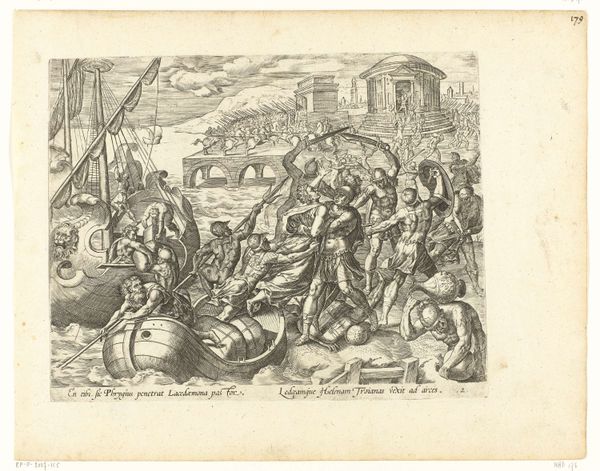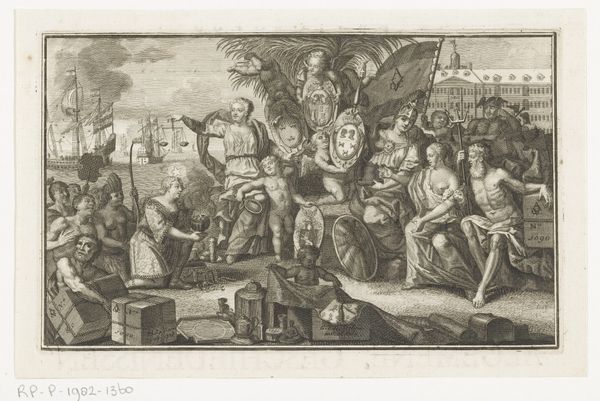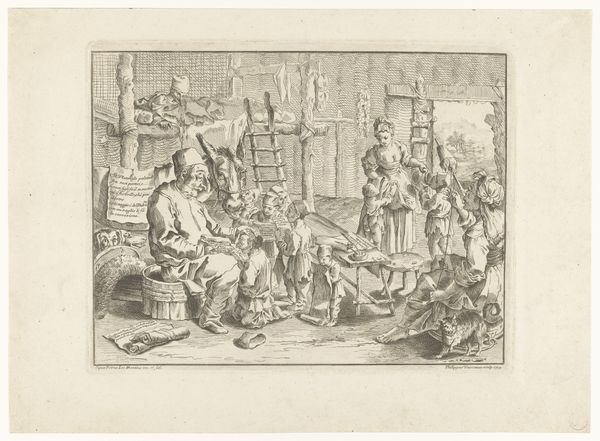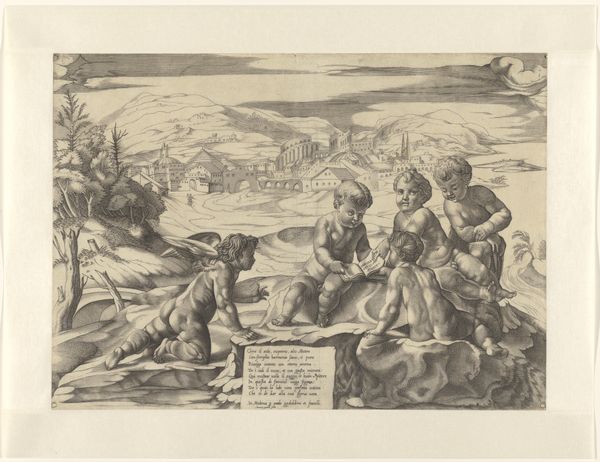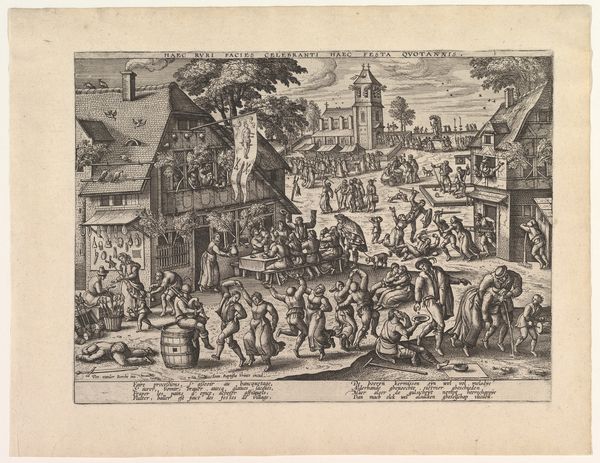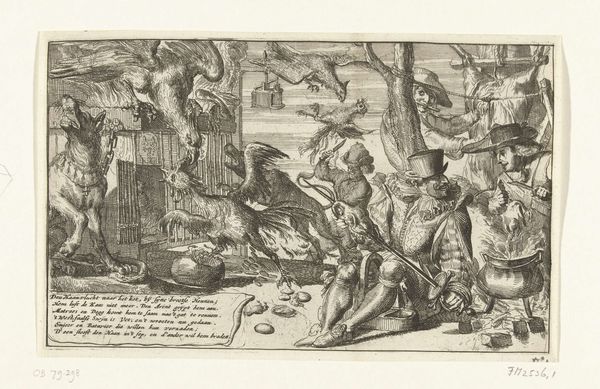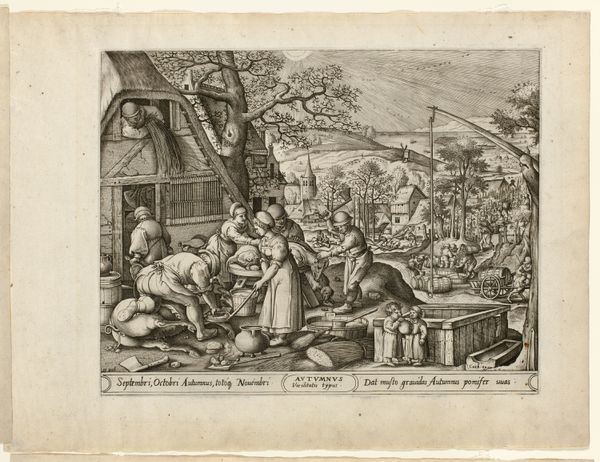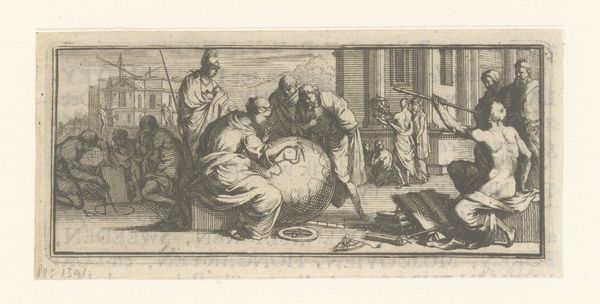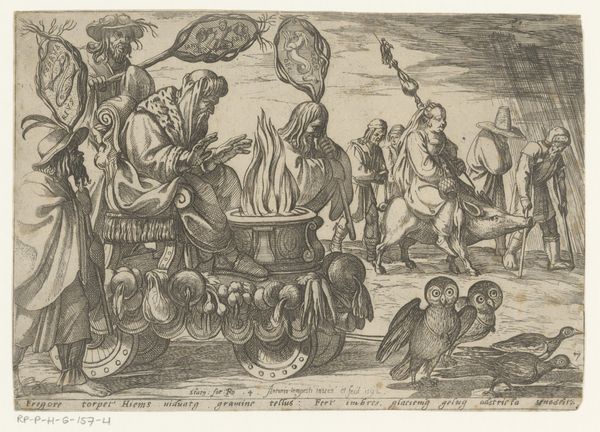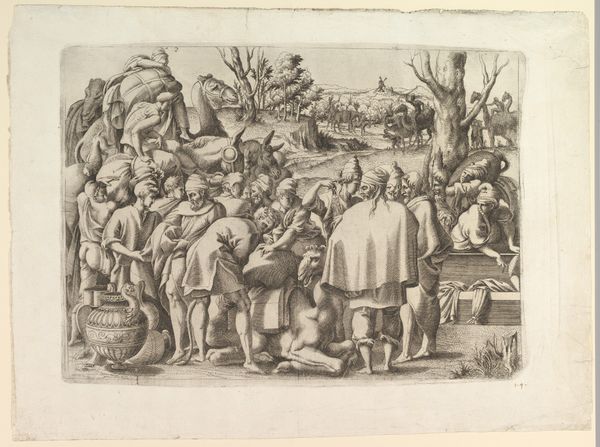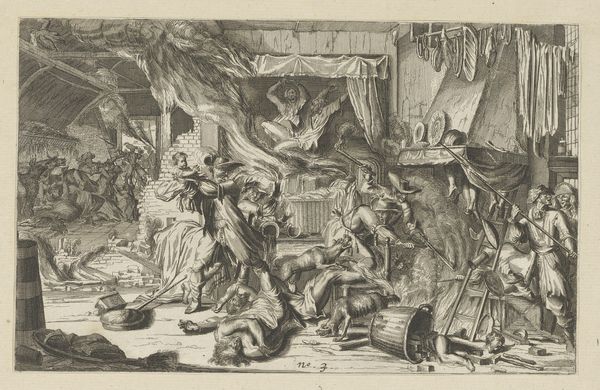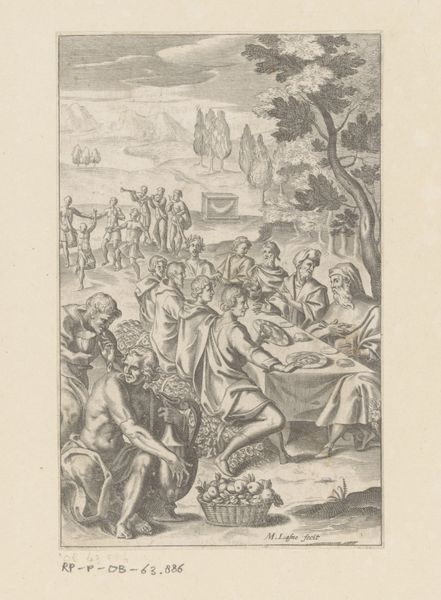
print, engraving
#
narrative-art
#
baroque
# print
#
pen sketch
#
caricature
#
genre-painting
#
engraving
Dimensions: height 274 mm, width 355 mm
Copyright: Rijks Museum: Open Domain
Editor: This is Filippo Vasconi's "Pulcinella in a Rolling Chair," made in 1719. It’s an engraving, so a print, and it feels very chaotic! All these little figures crammed together… what strikes you about it? Curator: Considering the material – the very act of engraving – emphasizes the labor involved. Each line, each detail is deliberately etched into the plate, highlighting the intensive and skilled work required in printmaking during the Baroque era. Do you think the subject, Pulcinella, is commenting on systems of labor, too? Editor: Maybe… he seems to be waited on by so many! There are figures constantly working for him, maybe representing exploitation. Is the print’s dissemination significant in itself? Curator: Absolutely. Prints allowed for the mass production and distribution of images, making art more accessible beyond the elite. The subject matter, Pulcinella, is significant; popular theatre brought narratives to the masses, and to caricature him comments, perhaps critically, on widespread economic realities and consumption. Does knowing that change how you interpret the work's humor? Editor: It does make it seem a little darker, maybe. Like the humor is poking fun at something more serious about society at the time. It’s interesting how a seemingly simple print can reveal so much about labor and the economy. Curator: Exactly! Examining the print's production and reception in relation to its content reveals fascinating layers of social commentary, wouldn't you agree? Editor: Definitely. Looking at art through that lens makes it a lot more engaging and relevant, I think. Curator: Agreed! Material processes are inextricably linked with societal conditions, and considering this unveils deeper cultural significance within art.
Comments
No comments
Be the first to comment and join the conversation on the ultimate creative platform.

